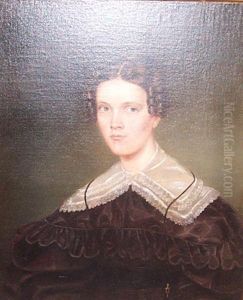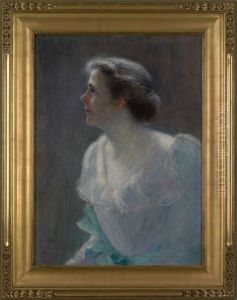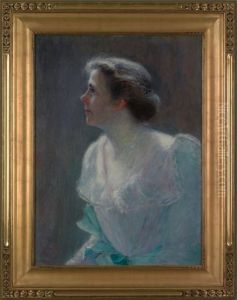Evelyn Rumsey Cary Paintings
Evelyn Rumsey Cary was an American artist and suffragette born on August 18, 1855, in Buffalo, New York. She came from a prominent family, as her father was a successful businessman, Bronson Case Rumsey. This privileged background allowed her to pursue her interests in the arts from a young age. Cary studied painting under some of the most prominent artists of her time, including F. Luis Mora and John La Farge, which greatly influenced her artistic development.
Cary is best known for her paintings, but she also worked in other media, including etching and woodcuts. Her subjects often included landscapes, floral studies, and occasionally portraits. However, it was her involvement in the women's suffrage movement that marked her historical significance. She created the famous poster 'The Bugler Girl' for the 1908 National American Woman Suffrage Association convention, held in her hometown of Buffalo. The image of a woman bugler, modeled after Lady Liberty, became one of the iconic symbols of the suffrage movement.
Beyond her contributions to art and activism, Cary was also involved in her local community. She played a role in establishing the Buffalo Fine Arts Academy and was a member of the Twentieth Century Club of Buffalo, an organization dedicated to community service and intellectual development among women. Her marriage in 1891 to Dr. Charles Cary, a notable physician in Buffalo, further established her position within the city's social elite.
Evelyn Rumsey Cary's passion for art and her dedication to women's rights left a lasting legacy. She continued to be active in both the arts and philanthropy until her death on March 1, 1924. Today, her artworks can be seen as both aesthetic achievements and as historical documents reflecting the cultural and social dynamics of her era.


